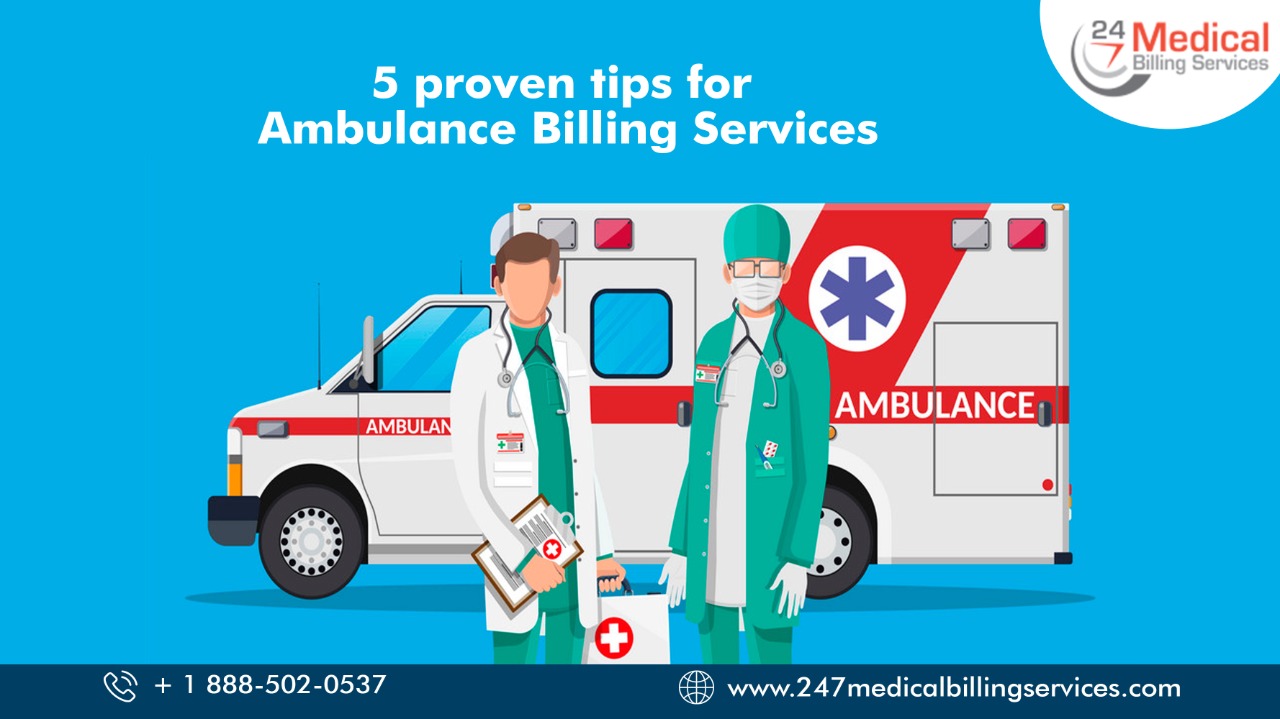
5 Proven Tips for Ambulance Billing Services
The recent health's study revealed that the ground ambulance costs for patients have been increased from $486 to $759 between 2017 and 2020. Despite the 56% increase and the rising of ambulance services fee from $1,042 to $1,277 during the same period, Medicare have increased the reimbursement by mere 5% only, i.e., from $441 to $463.But the only thing you want when providing ambulatory services is to get the 100% reimbursement. With all the changed regulations and new rules in place, it is pretty easy to get your bills rejected by the insurer. So, what should be done? Here are five proven tips that will ensure the best way to get the claims and manage the revenue with your ambulance billing services.
1. Validation & Checklists
The billing system of your ambulatory services needs to be smooth-running and efficient-managed to ensure the quick payments. It can be achieved easily with mistake-free EMS claim submission.
The process starts with the correct details about the dispatch, carrying the patient to the facility, or ePCR. It is essential to warrant that the data entered must be validated for assurance so once the claim is ready, the data is QA'd to minimize the processing time.
Any EMS that uses ePCR software needs to consult to professional billers from the ambulance billing department for the initial setup. They can help in configuring the software's built-in details, the input for data validation, and the rules needed for ambulance billing. Furthermore, it is important to training the staff about the ambulance billing tip guides and checklist to help them process and validate the ambulance claim bills.
2. Quality Assurance (QA) Check
There should be a full cycle of ambulance billing quality assurance check for every EMS operation. A Quality Assurance specialist needs to ensure a clear and consistent QA process for the entire EMS workflow. This will ensure proper and quick submission of the ambulance billing.
However, the process of the QA cycle management does not end with the claim submission instead it also checks for denials and rejections to analyse them. It will help isolate the issues that cause the denials and repudiation while identifying the workflow area leading to it. The process will thus assist in correcting the problems and the documenting process and use it to train the staff for improvement.
3. Collecting, Implementing & Sharing Documentation
One of the reasons that lead to delay or denial of claims in ambulance billing services is the lack of producing supporting documentations. All these documentations include the medical necessity forms, transports, and the authorization, both pre and post. These are vital in ambulance transportation, and every document must have signatures.
However, it can be challenging to get the signature at times due to the patient's condition. There can be difficulty in obtaining the provider's signature of the referring or receiving agency. When there are missing signatures, the claim can get delayed or even rejected.
Integrated EMS software will help you set up a well-defined process of collecting and sharing supporting documents across all the areas of EMS operation.
4. Integration Is Must
It is imperative to implement EMS software for proper ambulatory billing service. But don't just find any EMS billing software. While evaluating the software in terms of its cost, functionality, features, and interface, you also need to consider how it integrates with the EMS patient care reporting and dispatch.
You should always opt for an EMS billing software that will offer an integrated workflow solution. It will help you to improve the communication and data transfer process, thus making the billing services and claims submission hassle-free.
Moreover, if the ambulance billing software, EMS dispatch, and ePCR are from different vendors, you have to find additional software to map all these fields and connect the systems. In case all of them fail to work together, it will create a delay in the entire billing process and thwart the claim.
5. Always Engage & Stay Updated
Having a strategy for improving and putting in place an efficient ambulance billing service strategy is essential. But to ensure that the EMS ambulance billing process is working towards excellence requires non-stop work towards updated medical industry.
Constant monitoring and analysing the process is a must. It will allow you to stay at the top of the changes and make the required adjustments as they hit any glitches on the way. It is always better to make slow and frequent changes as needed rather than wait for a major overhaul.
A multi-disciplinary ambulance billing team can help you with reviewing the EMS ambulance billing software, analysing the collection rates, denials lost, and won to determine the changes needed in your billing services. Or, the staff should be regularly trained and updated with all the ambulance billing and coding changes to ensure they are at the top of the game.
How to Achieve The Best Ambulance Billing Service?
The key to timely and accurate ambulance billing is communication and workflow between the staff, dispatchers, and billers. An integrated EMS workflow solution can ensure that the bills for the ambulance service get paid after the patient transport is completed.
However, there is always rejection, delay, and issues with reimbursement in reality. One way to take care of ensuring you get the best ambulance billing services is by outsourcing ambulance billing and coding to 24/7 Medical Billing Services. They have been taking care of the numerous ambulance billing services for years so that you can focus more on core operations.
Read more: Understanding The Complexity Of Ambulance Billing Services

.png)